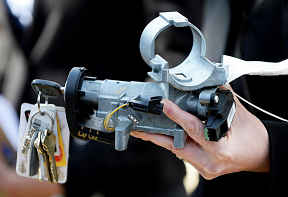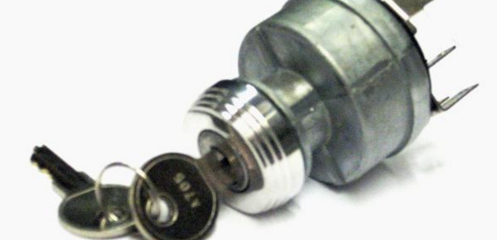Starting and ignition systems are vital for the car and they both require electricity to operate.
Here are some guidelines for troubleshooting:
One should make sure that the automatic transmission is in the correct gear and the clutch on a manual transmission is completely depressed. If the car doesn’t make a noise when it is started, check the battery terminal connections and then look for other loose connections in the ignition systems.
Replacing the Car’s Starter
For replacing the starter motor or starter solenoid, follow these steps:
First, remove the negative cable from the battery.
Locate the starter, it is a nearly three inches round motor located at one side or the other of the flywheel. The solenoid is probably mounted on the side of the starter.
Disconnect the battery cable and other wires attached to the starter or solenoid.
Remove the solenoid and starter by removing two bolts that mount the starter. Be careful not to drop the starter. In case the solenoid is not attached to the starter then remove it from the firewall.
Replace or repair the starter and solenoid. It is better to buy a replacement from an auto dealer. It should be tested before buying.
Reinstall the solenoid and starter. All the connections should be tightened and checked before using the starter.
Diagnosing and Treating Ignition Ills
The job of an automotive ignition system is simple, it supplies a spark to the engine at the time it’s most needed. Fortunately today’s technology has stabilized and the newest cars at least have some logic. Not even mechanics repair ignition systems, they replace bad components. By using a simple volt-ohmmeter, many problems can be tracked down and many ignition system problems can be solved.
Repairing Ignition switch
 The ignition switch of today has become more complex, earlier it was simple, three-position switch with Off, On and Start. The ignition switch is now linked to sensors, interlocks, anti-theft devices and the bank. The failure of an ignition switch typically is fortunately traced to a loose wire.The ignition coil takes the weak battery power and turns it into a spark that is powerful enough to ignite your fuel’s vapor. There are two coils of while in the ignition coil and they are right on top of each other called windings. The windings are differentiated as primary and secondary. The primary winding gathers the power to create a spark. The secondary winding sends it to the distributor.
The ignition switch of today has become more complex, earlier it was simple, three-position switch with Off, On and Start. The ignition switch is now linked to sensors, interlocks, anti-theft devices and the bank. The failure of an ignition switch typically is fortunately traced to a loose wire.The ignition coil takes the weak battery power and turns it into a spark that is powerful enough to ignite your fuel’s vapor. There are two coils of while in the ignition coil and they are right on top of each other called windings. The windings are differentiated as primary and secondary. The primary winding gathers the power to create a spark. The secondary winding sends it to the distributor.
For repairing an ignition switch and wiring, follow this simple guide:
1. Locate the electrical schematic of your car’s ignition system. The schematic tells what is in the ignition wiring system such as sensors and interlocks, besides the switch. Usually it is printed in the car manual or an aftermarket service manual.
2. Visually inspect the ignition switch and wiring for any loose wires, burns or any other damage. It can be reconnected and replaced as needed.
3. An ohmmeter can be used to test the continuity of wiring and ignition switch. The defective parts have to be replaced as needed.
Replacing Sensors and Control Modules and Distributors
A car’s ignition system has many electrical components like sensors, control module and distributor.
For testing and replacing electronic ignition components, follow these steps:
1. Locate the car’s electronic ignition and distributor. It is also called ignition control module or ICM. It controls the ignition system and is mounted either within the distributor or nearby.
2. Move the ICM cover as needed, inspect it for any problems such as loose wires, cracked cap or rotor. It has to be cleaned and replaced as necessary.
3. Use an ohmmeter for testing continuity of each component. Locate the sensors and test it along with the ignition control module.
4. Remove and replace the distributor if necessary. Note the rotor’s exact position so it will help in reinstalling the new distributor with the rotor in the same position.
5. Document the required steps very carefully for easy reference.
 Basically, a car engine is like a large pump. Air and gas are being pumped in and exhaust is being pumped out. There is a by-product of excess energy that is being sent to the wheels and exhaust (which exits through the tailpipe). Your car’s engine combines the air and the fuel, and adds a spark. This is what we refer to as ignition.
Basically, a car engine is like a large pump. Air and gas are being pumped in and exhaust is being pumped out. There is a by-product of excess energy that is being sent to the wheels and exhaust (which exits through the tailpipe). Your car’s engine combines the air and the fuel, and adds a spark. This is what we refer to as ignition.
The ignition system contains an ignition coil, a distributor, a distributor cap, a rotor, plug wires and spark plugs. Older ignition systems use what is called a “points-and-condenser system” in the distributor. Current ignition systems like the one your car most likely contains uses an ECU. An ECU or an engine control unit controls the spark and ignition timing.

